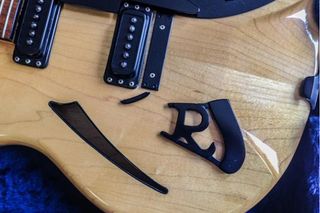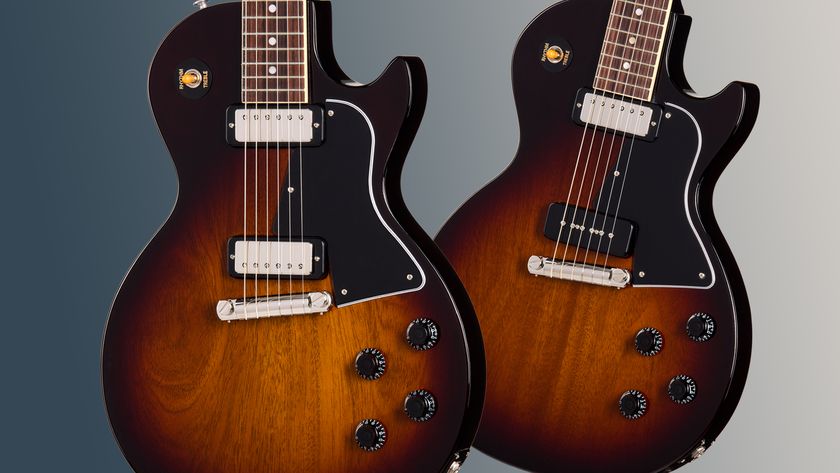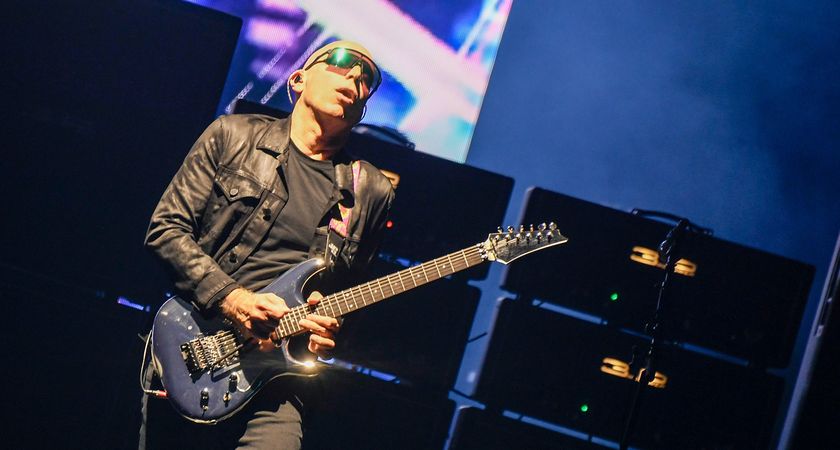Living With a Self-Destructive Guitar

My Rickenbacker 360/12 has done something terrible. It has tried to off itself.
It's not my fault, honest. I'm a good parent. I've strung it with the manufacturer's recommended strings. I've only played it at home, wiped it down after each use and always stored it in its case in a temperate room.
And yet I can only assume it had been depressed for a very long time. Maybe I should have seen the signs. Too many years of playing the 12-string jingle-jangle of “Mr. Tambourine Man.” All those Beatles tunes until she finally did get a ticket to ride, yeah.
Whatever the reason, this time when I opened the case, instead of six lovely, parallel pairs of strings running from tailpiece to headstock, it was as if the creature from Alien had mistaken my guitar for John Hurt and had just eaten its way out of the f-hole. There were strings everywhere. The bridge had launched itself toward the tuners while the incredibly cool black “R” tailpiece was now, more accurately, tailpieces.
I was stunned. I felt the typical reaction to this sort of event. Shock initially, then sadness, then anger that my beloved guitar had done this to me.
I worked my way through the guitarist's Five Stages of Grief. Fifteen minutes later, when I finished searching my soul to dredge up one final, 45-letter expletive, I began looking on the internet, hoping to make sense of this 12-string tragedy.
It turns out that the web is full of stories about the Rickenbacker “R” tailpiece doubling as an IED. Unfortunately, once broken these tailpieces aren't easily repaired. So following the standard advice from various guitar forums, I went to a local guitar dealer who promptly called the manufacturer personally. The good news is that Rickenbacker happily replaced it, even though my guitar was no longer under warranty. The bad news is that making them happy to replace it cost $150. Happy days.
Get The Pick Newsletter
All the latest guitar news, interviews, lessons, reviews, deals and more, direct to your inbox!
My replacement tailpiece is now chrome (the original black version apparently isn't available anymore), and seeing it is a constant reminder, a prosthetic for where my Ric self-harmed.
Playing my 360/12 again has made me realize the inherent fragility of electric guitars. We tend to think of them as the burliest members of the guitar family. With classical guitars at the feather end of the spectrum—so delicate you have to play them sitting down with one leg propped on a stool and hands cradling it just so. On the beefier end is the Telecaster, a guitar so tough that it's Keith Richards' weapon of choice—literally. (You have seen the video of him cold-cocking an aggressive fan with one, haven't you?)
But even a seemingly rugged guitar like an electric can have a weak spot: the Les Paul's headstock, the neck of an SG, and the…well, pretty much everything of a hollow-body electric.
The thing is, I had stopped thinking about how a guitar actually functions. It works by being under constant tension. Regardless of whether they're pulling up on the bridge of a flat-top acoustic or pushing down on the bridge of an archtop, the strings put the guitar under unremitting stress.
I found some measurements for the string pull on mine. Even my extra-light gauge flatwounds represented 230 pounds of tension forever pulling from one end of my guitar to the other. 230 pounds! That's basically me plus a set of barbells hanging from that thin metal R, unceasingly, for 24 years.
I have three guitars with tailpieces: this Rickenbacker, a plastic Maccaferri from the Fifties and an ES-175. On two of them, the tailpiece has catastrophically failed. Only the ES-175 still has its original tailpiece intact. Maybe I should have been surprised at how long it hasn't exploded.
So what's the takeaway on all this? I guess I should just learn to stop stressing out and cherish my little electric bomb and its 12 steel fuses. And on the bright side, $150 to replace a tailpiece is a lot cheaper than having the bridge on a flattop fail. When that goes, it's likely to take a hunk of the guitar along with it.
Until then, I'll just accept that it was my guitar's time, be philosophical about it, and use the healing time to learn one more Rickenbacker 360/12 hit. Hmm…should it be, “Turn! Turn! Turn! (To Everything There is a Season) ” or “I Should Have Known Better”?
William Baeck is a writer, photographer and hack guitarist living in London. You can check out his webpage at williambaeck.com and reach him on Facebook and Twitter.

“Satin Stratocaster dreams”: Fender and Thomann have produced two new exclusive Stratocaster lines – and their prices rival existing US and Mexico-made models

“A new take on the classic”: Gibson gives its Les Paul Special an ultra-rare pickup overhaul with new Mini Humbucker models










